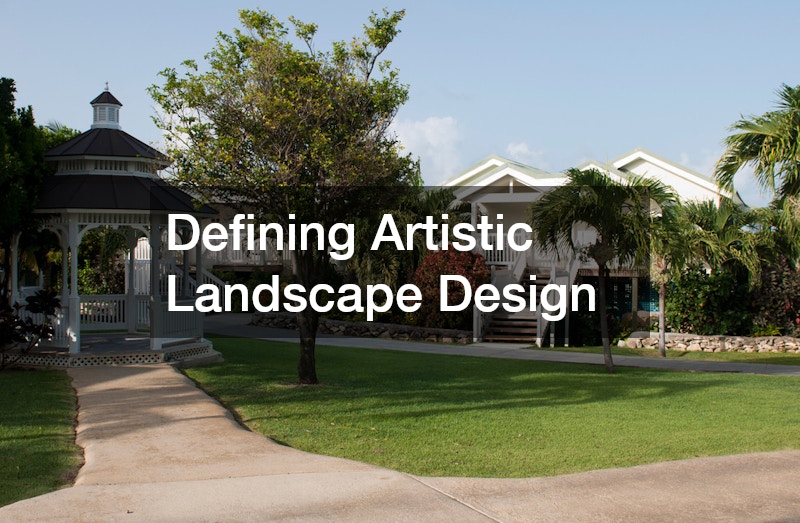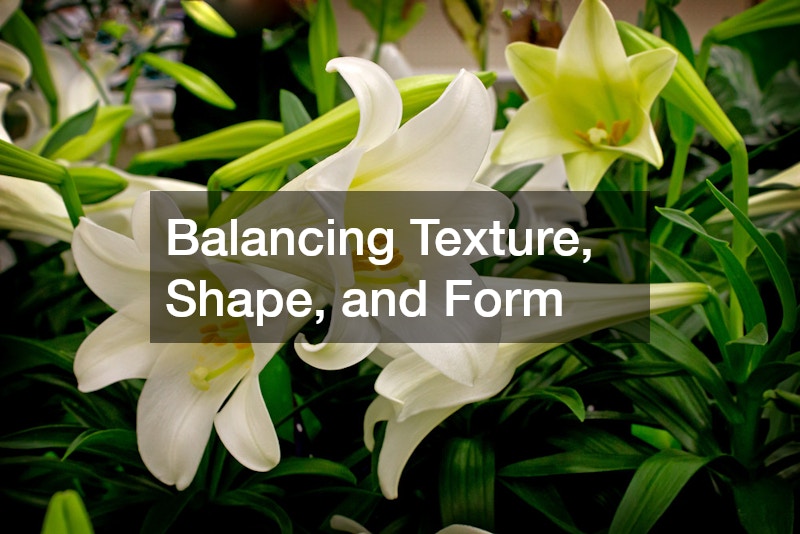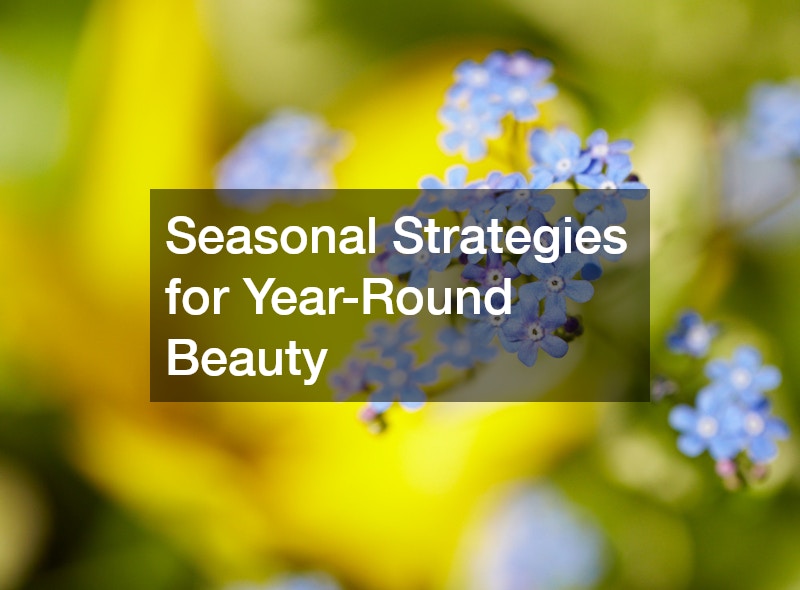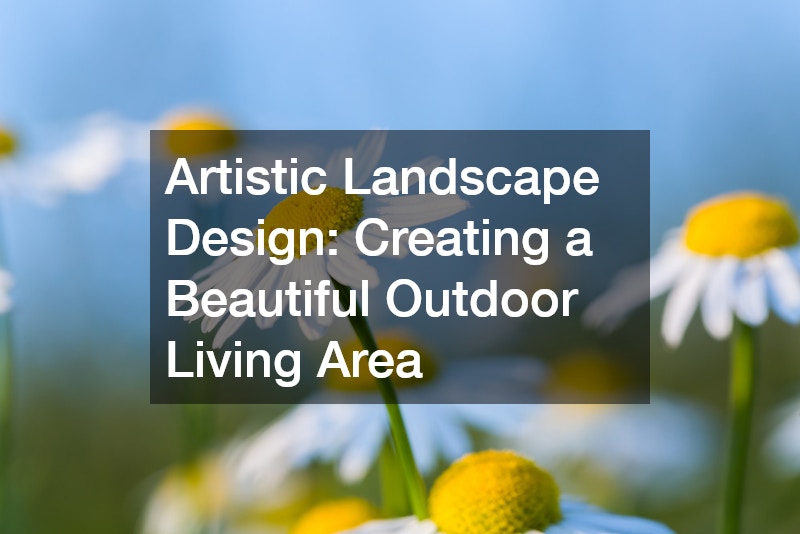Creating a serene and beautiful outdoor space has become increasingly important for many homeowners. An artfully designed landscape not only enhances the aesthetic appeal of your property but also provides a sanctuary where you can relax and connect with nature. Let’s explore the essential components of artistic landscape design and offer practical tips to help you create a truly unique outdoor living area.

Defining Artistic Landscape Design
Artistic landscape design involves more than simply planting a few trees and flowers around your yard. It is an intricate process that combines creativity, knowledge of nature, and landscaping design principles. This discipline focuses on creating visually stunning landscapes that reflect the homeowner’s personality and style while also promoting sustainability and harmony with the surrounding environment.
Each element within artistic landscape design should be selected with intent, ensuring that every component plays a role in enhancing the overall composition. Factors such as symmetry, balance, and proportion must be considered, along with colors, textures, and forms to create a cohesive visual experience. Unlike traditional landscaping, artistic landscape design embraces innovation, encouraging the use of unconventional materials and ideas to create truly one-of-a-kind spaces.
Landscaping design that incorporates artistic elements can transform any outdoor area into a masterpiece. Designers often draw inspiration from various art forms and cultural influences, using them to guide their approach. Whether it’s through the use of bold color schemes, sculptural installations, or thematic plantings, artistic landscape design celebrates creativity and originality.
Blending Natural Elements With Creative Flair
One of the hallmarks of artistic landscape design is the ability to seamlessly blend natural elements with creative flair. This involves using plants, water features, and other organic components alongside human-made structures or artworks. Balancing the two requires a deep understanding of how different materials and textures interact within a landscape.
For example, a concrete contractor might be employed to create custom pathways or retaining walls that serve as functional yet artistic elements within the garden. Strategic placement of these structures can add depth and dimension, guiding visitors through the space while complementing the natural terrain. This blending of materials and forms helps create a harmonious balance that enhances the overall beauty of the landscape.
Utilizing varying scale and contrast is another technique artists use in blending natural elements with creativity. Large sweeping landscapes punctuated by small, intricate details can captivate the viewer’s attention, inviting them to delve deeper into the environment. Incorporating these techniques can result in unexpected surprises and visual delight, transforming an ordinary landscape into a masterpiece.
Choosing a Focal Point for Visual Interest
A successful artistic landscape design often centers around a well-chosen focal point that draws the eye and anchors the entire composition. Selecting the right element as a focal point is crucial, whether it’s a majestic tree serviced by professionals, a stunning sculpture, or a tranquil pond. This central feature serves as a visual anchor and establishes the tone for the surrounding landscape.
Landscaping designs that effectively utilize focal points do so by carefully considering the scale and placement of each element. A tree service may enhance a solitary tree by shaping its canopy to create dramatic shadows or highlighting its unique bark texture. Such attention to detail ensures that the focal point remains the centerpiece, maintaining visual interest throughout the seasons.
To further emphasize a focal point, the surrounding landscape can be designed to subtly point towards it. Pathways, garden beds, and even lighting can be strategically arranged to guide the viewer’s gaze, emphasizing the chosen element. This technique reinforces the cohesion of the design, helping to create a unified and visually impactful outdoor space.

Using Color Theory in Plant Selection
The vibrant colors found in a well-curated garden are often the result of careful planning and the application of color theory. Selecting the right plants involves understanding how colors interact and complement each other within a landscape setting. By thoughtfully considering color combinations, you can create a harmonious and visually stimulating environment.
Color theory in artistic landscape design does not only stop at flowers; foliage and bark can also contribute to the overall color palette of the space. For example, a bright red maple surrounded by green conifers can create a striking contrast, drawing the eye to the vibrant focal point. A tree removal service can aid in maintaining the health and appearance of plants to ensure consistent beauty throughout the seasons.
Beyond aesthetics, color in landscape design can influence atmosphere and mood. Warm colors such as reds, oranges, and yellows evoke energy and excitement, while cooler colors like blues, purples, and greens can create calm and tranquility. Utilizing color theory allows homeowners to shape the ambiance of their outdoor living space to suit their preferences, enhancing their connection to the natural world.
Incorporating Sculptures and Garden Art
Integrating sculptures and garden art is a brilliant way to add a unique touch to any landscape. These artistic elements can serve as focal points, adding depth and character to the garden while expressing the homeowner’s personality and style. Sculptures can range from traditional stone and metal pieces to modern and abstract forms, providing limitless design opportunities.
Collaboration with a concrete contractor or other artisans can ensure that each piece is perfectly suited to its environment, complementing the surrounding natural elements. Installed as standalone art or incorporated into larger designs, sculptures add intrigue and sophistication to a space. The placement of such elements can also influence movement through the garden, encouraging exploration and discovery.
Incorporating garden art provides a platform for creativity, allowing homeowners to make unique statements through their landscape. Whether featuring a vintage statue as a centerpiece or including whimsical metalwork among the foliage, these artistic additions provide cultural resonance and narrative to the landscape. Moreover, such installations can evolve over time, offering changing perspectives seasonally, endlessly renewing the landscape’s appeal.
Designing Outdoor Rooms With Purpose
Creating outdoor rooms is an essential component of artistic landscape design, providing functional and aesthetic spaces that enhance outdoor living experiences. These defined areas offer opportunities for relaxation, dining, and entertainment. Thoughtful division of space ensures that each area serves a purpose while contributing to the overall harmony of the landscape.
Fencing and natural boundaries can be employed to delineate separate zones such as cooking areas, lounges, or play spaces. By combining structural elements with natural features, landscaper contractors can create inviting environments that cater to various activities. Thoughtful consideration of materials, layouts, and furnishings is crucial to ensure cohesive design throughout, fostering comfort and usability.
Beyond practicality, the design of outdoor rooms should also reflect the homeowner’s interests and lifestyle. Accessories such as pergolas, seating, and decorative accents are tools in crafting personalized environments that echo interior living spaces. In this way, exterior rooms become extensions of the home, facilitating a seamless transition between indoor and outdoor living.

Balancing Texture, Shape, and Form
Balanced texture, shape, and form are vital for an engaging and visually appealing landscape. These elements work together to produce varying levels of complexity, depth, and structure, transforming the outdoor space into an artistic canvas. By considering each component’s qualities, you can create a landscape teeming with visual interest and personality.
Landscaper contractors are skilled at blending textures by using different plant species, hardscapes, and materials. The contrast between rough stone, smooth ornamental grasses, and leafy canopies creates layers of complexity. Subtle changes in texture engage the senses and stimulate curiosity, prompting closer observation and consideration of each element of your home’s artistic landscape design.
The use of form and shape is equally important, guiding movement and defining space within the landscape. Bold geometric designs or undulating curves can create visual order and flow while differentiating distinct areas of the yard. This intentional use of shape can amplify strong lines or soften the structural aspects, enhancing the garden’s artistic value.
Lighting Techniques to Highlight Artistry
Landscape lighting plays a crucial role in extending the visual enjoyment of your outdoor space once the sun sets. Properly placed lights can highlight key features, adding dimension and depth while enhancing the overall atmosphere. This interplay of shadows and illumination can transform an ordinary landscape into a dramatic nighttime spectacle.
Planning lighting requires careful consideration of both function and aesthetics to achieve perfect harmony. Whether employing path lights to guide the way or uplighting sculptures and trees to add drama, each element can be strategically illuminated to accentuate artistic landscape design features. Effective use of lighting creates mood and atmosphere, providing opportunities for changing the landscape’s character after dark.
In addition to showcasing artistry, thoughtful landscape lighting ensures safety and security for occupants and guests. Tailored lighting solutions can provide adequate visibility for pathways, entrances, and outdoor rooms without compromising aesthetic appeal. By highlighting the interplay between nature and design, well-planned lighting strategies elevate the elegance and sophistication of the overall landscape.
Sustainable Design With Artistic Appeal
Sustainability is a fundamental consideration in modern landscaping, with increasing emphasis on creating environmentally friendly spaces that prioritize resource conservation. Artistic landscape design allows you to blend eco-conscious practices with innovative aesthetic solutions, achieving visual appeal without compromising sustainability.
Implementing native plants and utilizing water-efficient irrigation methods are key strategies in sustainable landscape design. By selecting flora adapted to local climate conditions, landscapers reduce reliance on water and fertilizers, promoting healthier ecosystems. Artists can further underscore these values by designing features that celebrate natural processes, such as rain gardens or green roofs.
Moreover, repurposed materials such as recycled metal or reclaimed wood can be incorporated into structures or artwork, enhancing sustainability alongside visual interest. These creative solutions encourage responsible consumption and showcase the potential for integrating artistic expression with eco-conscious practices. By prioritizing sustainability, you contribute to biodiversity, water preservation, and energy conservation while enjoying a beautiful and resilient outdoor area.

Seasonal Strategies for Year-Round Beauty
For artistic landscape design that maintains interest throughout the year, incorporating seasonal strategies is essential. This involves selecting diverse plant species that bloom, change color, or offer visual interest during different periods of the year. Thoughtful planning ensures that your garden remains captivating no matter the season.
Homeowners can achieve a dynamic landscape by enlisting tree trimming services to highlight specific plant features as they change. Seasonal maintenance, such as pruning or fertilizing, helps emphasize each plant’s beauty during its peak period. Similarly, integrating winter interest plants, such as evergreen shrubs or trees with striking bark, ensures the landscape retains appeal even in dormancy.
Rotating exhibitions of garden art and sculpture also maintain freshness, delighting visitors with new visual experiences. By adapting planting strategies and artistic displays to embrace each season’s unique qualities, you cultivate a landscape that never ceases to inspire and engage its audience year-round.
Maintaining Your Landscape
Maintaining artistic landscape design requires dedication, knowledge, and access to quality resources. Regular care, such as lawn mowing, weeding, and irrigation, ensures that your outdoor space remains healthy and visually stunning. Partnering with a reliable backyard supply store offers the necessary materials and expertise for ongoing upkeep.
Specialized tree removal and trimming services can help manage growth and health, preserving safety and aesthetic value. Consistent monitoring and upkeep mitigate potential challenges associated with weather, pests, or disease, safeguarding your landscape’s artistry. Other maintenance tasks, such as mulch replacement and seasonal decor adjustments, keep the garden vibrant and adaptable.
Enlisting professionals like landscaper contractors can provide valuable support in maintaining the integrity and beauty of your landscape. They offer expert guidance on design enhancements and plant care while managing larger projects or repairs. With their assistance, your artistic landscape can continue to grow and evolve, providing endless joy and inspiration.
Artistic landscape design is an intricate and rewarding process that enables homeowners to create beautiful outdoor living areas tailored to their personal style and preferences. By incorporating elements such as focal points, color theory, and lighting techniques, you can transform an ordinary landscape into an artistic masterpiece. As you apply these concepts to your own outdoor space, remember that collaboration with professionals, thoughtful planning, and regular maintenance will ensure long-term enjoyment and success.

